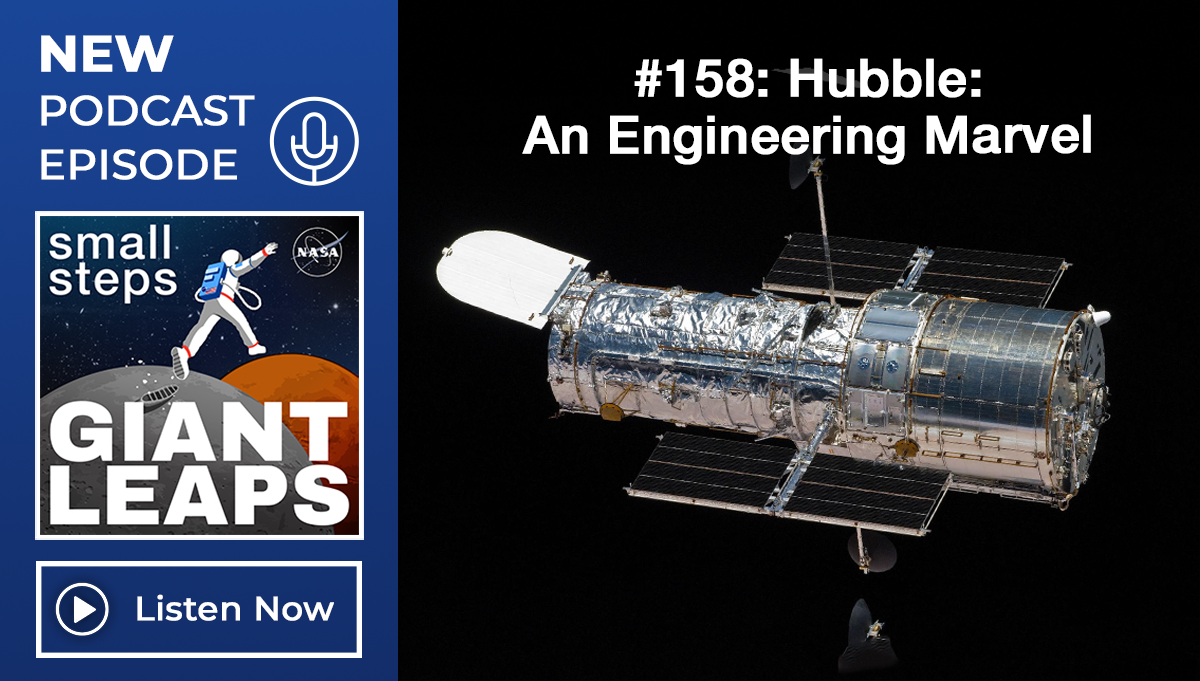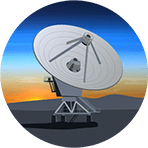
EPISODE 161: NASA’S ZERO GRAVITY RESEARCH FACILITY
A steel vacuum chamber 50 stories deep at NASA’s Glenn Research Center lets researchers simulate near-weightlessness by letting test hardware freefall for 5.18 seconds.
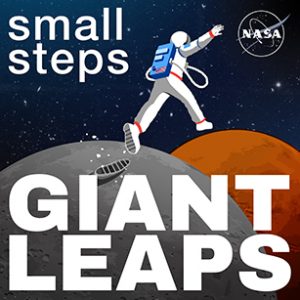
Small Steps, Giant Leaps
Tap into the experiences of NASA’s technical workforce as they develop missions to explore distant worlds—from the Moon to Mars, from Titan to Psyche. Learn how they advance technology to make aviation on Earth faster, quieter and more fuel efficient. Each biweekly episode celebrates program and project managers, engineers, scientists and thought leaders working on multiple fronts to advance aeronautics and space exploration in a bold new era of discovery. New episodes are released bi-weekly on Wednesdays.

EPISODE 160: TURNING SPACE DATA INTO SOUND
From black holes to star clusters, scientists are turning space data into sound with a process called sonification. Dr. Kimberly Arcand, visualization scientist with the Center for Astrophysics, joins us to explore how data sonification lets more people experience the cosmos and give researchers a new way to interpret science one note at a time. Read More

EPISODE 159: STARBURST: GAMMA-RAY HUNTER
StarBurst, a satellite the size of a washing machine, aims to detect the initial blast of gamma-rays, the most powerful bursts of energy in the universe. These huge explosions can occur when dense neutron stars collide, forging metals like gold and platinum. These metals are some of the building blocks of planets — like Earth. Read More

EPISODE 158: HUBBLE: AN ENGINEERING MARVEL
The Hubble Space Telescope has changed humanity’s understanding of the universe. Now in orbit for 35 years, it remains a remarkable feat of engineering. Read More
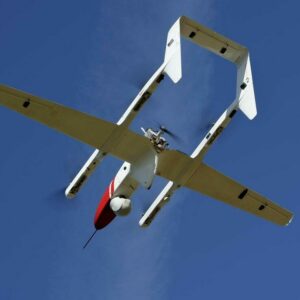
EPISODE 157: FIGHTING WILDLAND FIRES WITH DRONES
Fighting wildland fires by air at night is especially hazardous. NASA’s ACERO Project aims to make firefighting safer – day or night – with drones and smarter airspace management. Read More

EPISODE 156: A NEW ERA OF X-RAY ASTRONOMY WITH IXPE
IXPE, or the Imaging X-ray Polarimetry Explorer, is NASA’s first space telescope dedicated to studying X-ray polarization from extreme objects like black holes and quasars. Read More
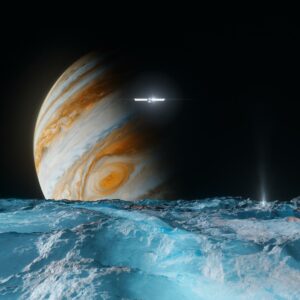
EPISODE 155: RISK MANAGEMENT AT NASA
Big or small, we all take risks nearly every day. But how does NASA manage it? Dr. Mary Skow, NASA’s first agency risk management officer, explains. Read More
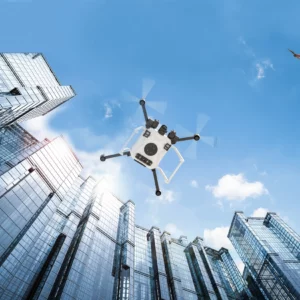
EPISODE 154: NASA’s AIR TRAFFIC MANAGEMENT-EXPLORATION PROJECT
NASA’s Air Traffic Management-eXploration Project aims to accommodate the growing demand of traditional and emerging aircraft that share the friendly skies. Read More
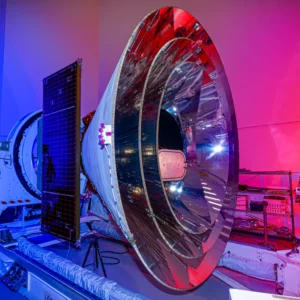
EPISODE 153: THE UNIVERSE IN LIVING COLOR WITH SPHEREX
NASA's SPHEREx Observatory will use 102 color filters to collect data on more than 450 million galaxies along with more than 100 million stars in the Milky Way in order to explore the origins of the universe. It will also study the abundance of water ice and organic molecules throughout the galaxy. Read More
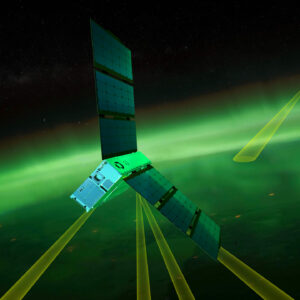
EPISODE 152: EZIE DOES IT
What can the auroras tell us about our planet’s relationship with the Sun? NASA’s EZIE mission looks into it. Read More




